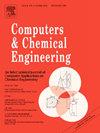Data-driven alarm parameter optimization
IF 3.9
2区 工程技术
Q2 COMPUTER SCIENCE, INTERDISCIPLINARY APPLICATIONS
引用次数: 0
Abstract
Most manufacturing sector businesses utilize advanced control mechanisms to sustain their ongoing operations. An alarm management system is one of these control mechanisms that works as a safety barrier, and it contains alarm messages indicating abnormal situations to operators. The causes of alarms mainly result in a harmful state of operations that should be eliminated as quickly as possible to minimize possible negative results. However, the size of the system, lack of people directing the system, and process-dependent peak conditions may lead operators to miss some critical alarms. Quality and quantity of products, job safety, and operational costs are some of the features negatively affected by these missing alarms. The proposed work aims to combine a well-established alarm management philosophy with advanced data analytics techniques to optimize decision variables in alarm management processes. This study introduces a novel data-driven optimization method that leverages the Tennessee Eastman Process as a benchmark to validate its effectiveness. The proposed method aims to ensure continuous alarm system health by contributing to the automation of the parameter optimization process in the life cycles of alarm management systems. Key contributions include the development of a method to associate disturbances with alarms, the creation of an alarm simulation platform, and the improvement of alarm parameters through a unique optimization approach. The results show that there is a trade-off between alarm reaction delay, which refers to the time between disturbances and the first relevant alarm and number of alarms and alarm on times. This trade-off can be evaluated in the desired direction by taking into account the priorities of the process.
数据驱动的警报参数优化
本文章由计算机程序翻译,如有差异,请以英文原文为准。
求助全文
约1分钟内获得全文
求助全文
来源期刊

Computers & Chemical Engineering
工程技术-工程:化工
CiteScore
8.70
自引率
14.00%
发文量
374
审稿时长
70 days
期刊介绍:
Computers & Chemical Engineering is primarily a journal of record for new developments in the application of computing and systems technology to chemical engineering problems.
 求助内容:
求助内容: 应助结果提醒方式:
应助结果提醒方式:


